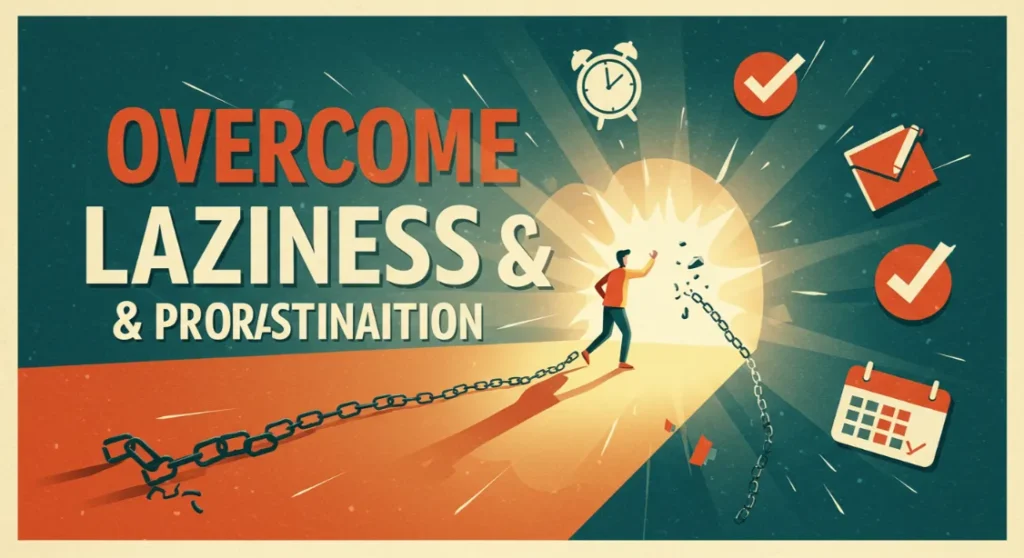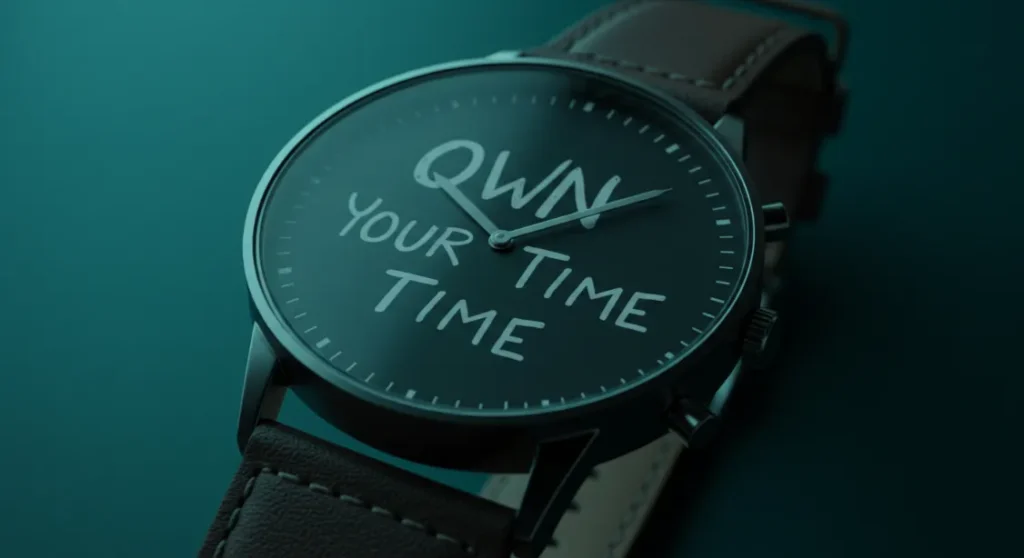Time slips through our fingers like sand. We all get the same 24 hours, but some people squeeze more life out of each minute than others. If you’re tired of watching the clock and wondering where your day went, you’re not alone.
Time wasting isn’t just about procrastination—it’s about failing to recognize the value of each moment. The good news? You can reclaim those lost hours and transform your productivity starting today.
Key Takeaways
- Identify your personal time-wasting triggers and eliminate them from your environment
- Implement the Pomodoro Technique to work in focused bursts with intentional breaks
- Create clear boundaries between work and personal time to prevent burnout
- Use time-blocking to schedule your most important tasks during peak energy hours
- Practice mindfulness to improve focus and reduce stress-related time waste
- Leverage technology tools to block distractions and automate repetitive tasks
Understanding Your Time Thieves
We all have different time thieves that steal our productivity. For some, it’s the endless scroll of social media. For others, it’s excessive meetings or the inability to say “no” to requests. The first step to reclaiming your time is identifying what’s stealing it.
Common time-wasting activities include:
Digital Distractions: Social media, email checking, and notification rabbit holes can consume hours of your day without you realizing it. Try using browser extensions to stay focused online and limit access to time-wasting sites.
Perfectionism: Spending too much time perfecting minor details instead of completing tasks can severely impact productivity. Remember that done is better than perfect.
Poor Planning: Without clear priorities, you might spend time on low-value activities while important tasks remain undone. Learning to prioritize tasks effectively can transform your productivity.
Multitasking: Contrary to popular belief, multitasking reduces efficiency. Your brain needs time to switch between tasks, resulting in productivity losses of up to 40%. Instead, focus on one task at a time for maximum efficiency.
The Pomodoro Technique: Work Smarter, Not Harder
One of the most effective methods for reclaiming your time is the Pomodoro Technique. This simple approach helps you work with time rather than against it:
Choose one specific task to focus on
Set a timer for 25 minutes
Work exclusively on that task until the timer rings
Take a short 5-minute break
After four cycles, take a longer 15-30 minute break
This technique works because it aligns with how our brains naturally function. We’re not designed for marathon focus sessions but rather for sprints of concentration followed by recovery. The Pomodoro Technique helps you break free from procrastination by making tasks less overwhelming and more manageable.
Time Blocking: Your Productivity Superpower

Time blocking is a game-changing approach to managing your day. Instead of working from a traditional to-do list, you schedule specific blocks of time for different activities.
Here’s how to implement time blocking effectively:
Identify your most important tasks for the day
Determine your peak energy hours
Schedule your most challenging work during these high-energy periods
Create dedicated blocks for email, meetings, and administrative tasks
Include buffer time between blocks for unexpected issues
Time blocking helps you take control of your day rather than letting it control you. It creates a realistic plan for what you can accomplish and prevents the common mistake of overestimating what you can do in a day.
The Mindfulness Approach to Time Management
Mindfulness isn’t just for stress reduction—it’s a powerful tool for improving focus and productivity. When you’re fully present, you waste less time on distractions and make fewer mistakes that require rework.
Try these mindfulness practices to enhance your productivity:
Single-tasking: Give your full attention to one task at a time. This mindfulness for productivity approach leads to better results and deeper satisfaction.
Mindful transitions: Take a moment between tasks to clear your mind before starting something new. This prevents the mental residue of previous activities from affecting your current work.
Regular check-ins: Pause occasionally throughout the day to ask: “Am I using my time wisely right now?” This simple practice can redirect you when you’ve drifted off course.
Incorporating mindfulness into your day doesn’t require meditation retreats or hours of practice. Even small moments of presence can significantly improve your relationship with time.
Setting Boundaries to Protect Your Time
One of the biggest time wasters is the inability to set boundaries. When you don’t protect your time, others will gladly fill it with their priorities.
Effective boundary setting includes:
Learning to say no: Every “yes” to someone else’s request is a “no” to something of your own. Be selective about your commitments.
Creating work-life separation: Establish clear endings to your workday to prevent work from consuming your personal time. This helps prevent burnout and maintains long-term productivity.
Managing interruptions: Communicate your focus times to colleagues and family. Use “do not disturb” settings on devices during deep work sessions.
Limiting meeting time: Question whether you need to attend every meeting and advocate for shorter, more focused gatherings.
Setting boundaries isn’t selfish—it’s essential for sustainable productivity and wellbeing. When you manage work stress effectively, you have more energy for what truly matters.
Technology: Friend or Foe?
Technology can be your greatest productivity ally or your worst enemy—it all depends on how you use it.
Productivity apps: Tools like time trackers, project management software, and digital calendars can help you stay organized and focused.
Automation: Identify repetitive tasks that can be automated, freeing up your time for more valuable work.
Digital minimalism: Regularly audit your digital tools and subscriptions. Keep only what truly adds value and eliminate the rest.
Notification management: Turn off non-essential notifications and batch-process emails and messages at designated times.
The key is to make technology work for you, not the other way around. Use tools that enhance your productivity without creating new distractions.
The Power of Habit Stacking

Creating new productivity habits is challenging, but habit stacking makes it easier. This technique involves attaching a new habit to an existing one.
For example:
After pouring your morning coffee, spend 5 minutes planning your day
Before checking email, complete one important task
After lunch, take a 10-minute walk to refresh your mind
By connecting new behaviors to established routines, you reduce the friction of change and make productivity habits more likely to stick.
Overcoming Procrastination Once and For All
Procrastination is perhaps the most insidious time waster. We delay important tasks in favor of easier, more immediately gratifying activities, creating a cycle that’s hard to break.
To overcome procrastination:
Use the 5-minute rule: Commit to working on a dreaded task for just 5 minutes. Often, getting started is the hardest part, and you’ll continue once you’ve begun.
Identify your why: Connect tasks to your larger goals and values. When you understand why something matters, you’re more motivated to complete it.
Address the root cause: Procrastination often stems from fear, perfectionism, or overwhelm. Understanding your personal triggers helps you develop targeted strategies.
Break it down: Divide large projects into smaller, manageable steps. This makes intimidating tasks less overwhelming and provides clear starting points.
Understanding the psychology of procrastination can help you develop effective strategies to overcome this productivity killer.
Measuring Progress and Celebrating Wins
What gets measured gets managed. Tracking your time use and productivity helps you identify patterns and make informed adjustments.
Consider these tracking methods:
Time audits: Periodically log how you spend your time for a few days to identify waste and opportunities for improvement.
Progress tracking: Measure completion of important projects and tasks, not just busy work.
Energy mapping: Note your energy levels throughout the day to optimize your schedule for peak performance times.
Don’t forget to reward yourself for productivity wins. Celebration reinforces positive behaviors and makes the productivity journey more enjoyable.
Conclusion: Your Time Reclamation Journey

Reclaiming your time isn’t a one-time fix but an ongoing practice. Start with one or two strategies that resonate most strongly with you, then gradually incorporate others as these become habitual.
Remember that the goal isn’t perfect productivity but intentional living. When you use your time with purpose, you create space for what truly matters—whether that’s career achievement, relationships, personal growth, or simply the joy of being present.
The journey to reclaim your time starts now, with the very next choice you make. What will you do with this moment?
Resources
- The Pomodoro Technique – Learn more about this popular time management method.
- RescueTime is an automatic time-tracking tool to see where your time goes.
- Headspace guided meditation app for mindfulness practice
- Todoist – Popular task management app for organizing your to-do list
- Forest App A gamified app to help you stay focused and avoid phone distractions
- The 7 Habits of Highly Effective People A Classic Book on Personal Effectiveness and Time Management